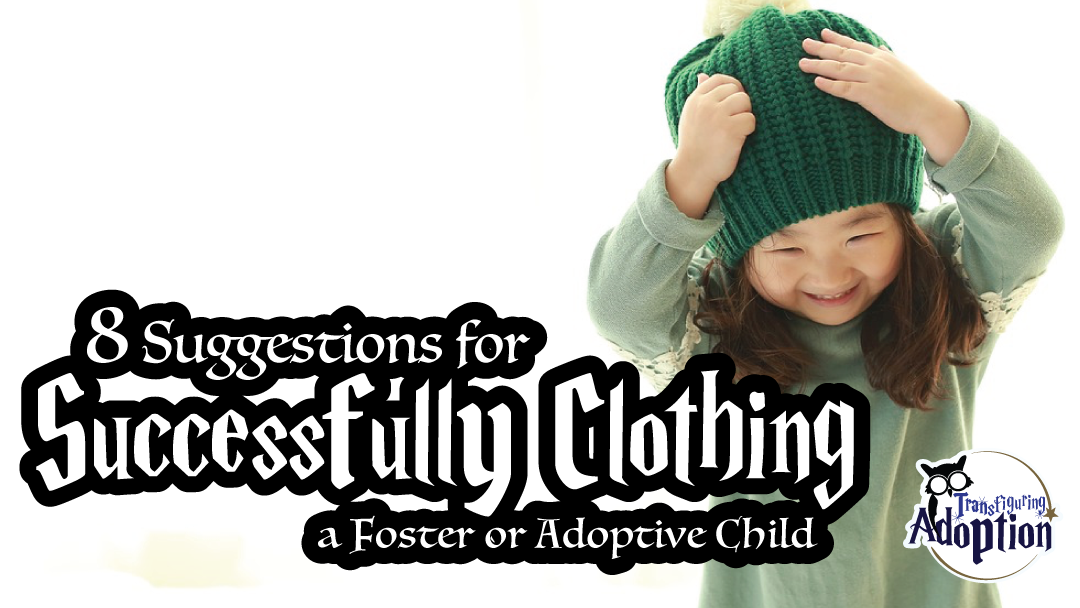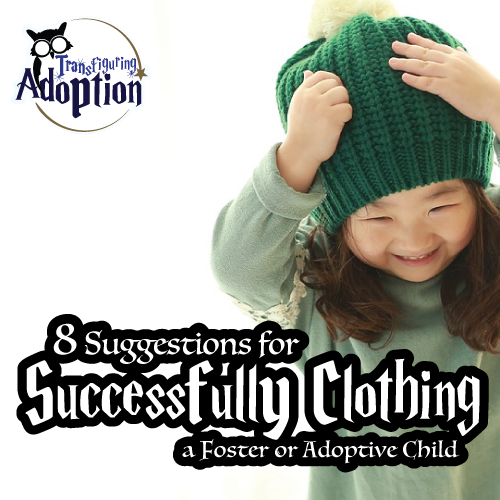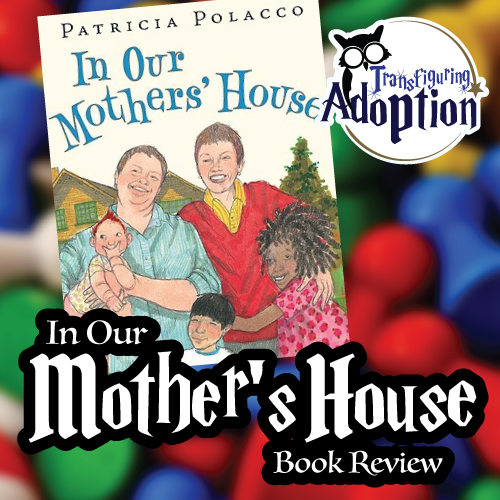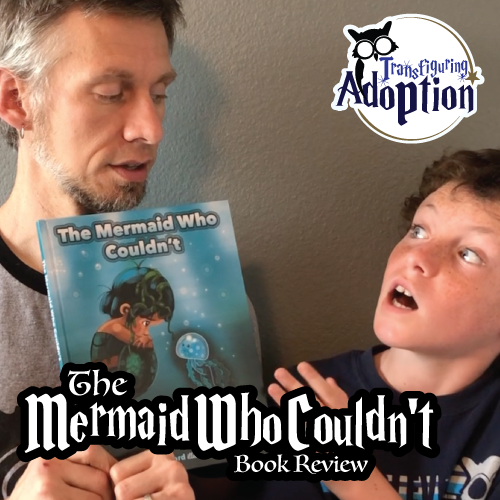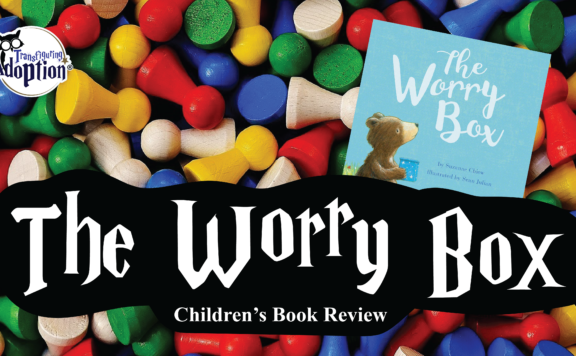Parents want their children, especially foster and adoptive children—who can tend be targets of stereotypes, bullying, and judgement—to look well taken care of and to feel good about what they are wearing. This can prove a major undertaking for most families, but it can prove especially challenging for foster and adoptive families. Let’s take a look at the added obstacles that impede keeping foster or adoptive children looking like they are provided for.
Barriers Foster and Adoptive Parents Face When Clothing Their Kids and Resources to Overcome Them
- Sensory Issues
Often children who have been through childhood trauma also have special needs like sensory processing disorder or autism which may affect what clothing a child can tolerate wearing. In our home, we have experienced several different issues related to clothing a child will or will not wear. We had one child who developed a sudden aversion to the feeling of jeans. This was of course right after Christmas when we had purchased several new pairs of jeans. The child would scream at the mention of jeans and demand “soft pants.” We suddenly needed clothing that did not feel like torture to the child’s senses. Realize that these children physically sense touch differently and work with them to accommodate their needs and make them comfortable. You will gain their trust, and over time, some issues may be remedied. See #8 for more on how to financially withstand this! - Sentimental Items
Oftentimes children in foster care or who were adopted have experienced a lot of loss, so it is easy to understand how they may become especially attached to items that were given to them by someone special or items that have some special meaning to them. These items may smell horrible or have holes or stains, but the child may hang on to these clothes as if their very life depended on it and refuse to even let them be washed.Tread lightly here. Do not create more loss. You may just have to allow the child to use the item the way it is, but you may be able to work together with the child to try to find solutions. You can wash or repair the items together. You can find another way the child can feel close to the person while saving the item in a special place. - Control Battles
Children whose lives seem out of control to them seek any kind of control they can, whether it’s how or where they eat or use the bathroom or what they wear. Clothing is an area where they may really dig their feet in and stand their ground leading to some major control battles. Choose your battles wisely! Foster and adoptive children face so many struggles, and what they wear is often at the bottom of the list of priorities. - Differences in Cultural Norms
How your family dresses and how your child’s first family dresses may vary widely. What is unacceptable at your house may have been perfectly acceptable at theirs. There can often be so many issues being tackled at once that this is just one more area where a child can feel grief and loss or a feeling like they cannot do anything right. This is a good time to work on compromises. You can show the child a variety of clothing items that will fit the intended purpose and allow them to pick from them. You can alter an outfit to make it acceptable (i.e., a shirt or leggings worn underneath revealing clothes). OR, you may just need to deal with letting them bend your rules a bit when there are more important issues at hand! - Self-esteem Issues
Often children who have endured trauma experience low self-esteem and low self-worth. They often view themselves as unworthy, and this includes feeling unworthy of nice clothes. They may not wear them because they feel unworthy. They may destroy or hide them. Helping the child gain confidence and self-worth is a whole other but vital area to work on. Repeated mantras that teach them they deserve to be cared for, that they are a valuable member of the family, and that they are provided for will help over time. - Stolen or Unreturned Items
You may find items disappearing. This can be particularly problematic if a child visits other family members who send them back in old clothes and sell or keep the clothes you sent them in. Foster parents often dress kiddos up nicely to visit their birth parents and get angry when they are returned in tattered or too small/big (or both) clothes.If you find this to be a problem, have a stash of clothes that you do not care so much about. You may send a child on visitation with clothes the family sent them back to your home in, and you may need to enlist the help of someone supervising the visits. - Destroyed Items
Children who have come from trauma may struggle behaviorally with rages and meltdowns. We have had many a cut or torn piece of clothing during moments when a child was unable to regulate their emotions and became destructive as a result. Teaching coping mechanisms takes time. Be willing to learn new skills in helping children learn to regulate their emotions and how to de-escalate situations. Redirection of behavior towards objects that are less valuable can ease some of the destruction. Some parents have found it necessary to remove extra clothes from a child’s room and place them elsewhere to protect the child (It’s amazing how dangerous clothing items can be to a child with self-harm behaviors.) and the clothes during fits of rage. - Cost
All kids grow and need new clothes, but foster and adoptive parents especially may face huge challenges when it comes to keeping their kids clothed because of all the aforementioned reasons and also because they often receive children into their home with little to no belongings. It is very costly just to provide all the basic clothing items needed for a child. Sometimes foster children who are just entering the foster care system receive a one-time clothing allotment from the state to purchase some basics, and some states or agencies provide a clothing allowance, but it often does not even come close to meeting the financial needs of everything from shoes, underclothing, belts, pants, shirts, coats, and so on. (See the HITTING THE M.A.R.C. – Establishing Foster Care Minimum Adequate Rates for Children study for a look at how foster care subsidies do not adequately meet the basic needs of a child let alone “keep up with the Joneses.”) Children who enter foster care or adoption often have experienced a lack of well-fitting and maintained clothing items. It can mean the world to them to go pick out a new outfit of their choice, and I highly suggest doing this! However, I know that it’s often not feasible to get everything new, though I do teach my kids how to find new clothes on the clearance racks for thrift store prices! This is where networking with other foster and adoptive parents in your area can become invaluable. Many locations have clothing and supply closets for foster families to utilize when they receive a new placement. Transfiguring Adoption has been compiling lists of places around the country that provide this type of service. See our Supplies, Services and Wishes Page (on our resources tab) for this list and more! Find a community of support from families like yours and trade supplies if a clothing closet is not available. Social media groups are a great place for requesting needed items and offering those your family no longer needs.
Now It’s Your Turn:
- What barriers have you faced?
- How have you overcome these barriers?
